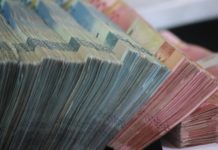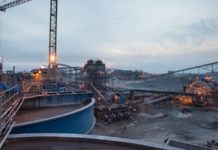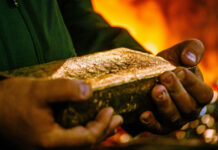
[miningmx.com] — THE posterchild of the commodity bull run, and the correction, must surely be uranium. Nowhere was excessive optimism as pronounced and the consequent meltdown so severe.
The JSE- and Toronto-listed Uranium One lead the pack in this regard scaling C$13.00/share at one point only to fall back to C$1.00/share as it became clear it couldn’t meet production targets.
Amid the market kerfuffle, it’s CEO and founder, Neal Froneman, resigned – a shock accompanied by cash flow worries, growing debt and solvency fears. North American institutions left the stock in Exodus type numbers while the board grimly considered whether to unpick the quick-fire acquistions they had approved only a year earlier.
It was an awful time but it’s a period Jean Nortier, now CEO, feels is over. So why do we keep harping on about it, he asks, having a pop at Fin24.com’s sister website Miningmx.com.
Well, perhaps Miningmx is mirroring the general perception Uranium One not only deceived the market by not conceding its problems earlier, but then compounded the issue by losing investors millions of dollars.
Investors hate to lose money and the media hates to be deceived. Nonetheless, history is history and Nortier deserves a chance to set the record straight, which he says he can do.
Firstly, Nortier reckons Uranium One has responded with fundamental remedial action. The Dominion mine in Klerksdrop, which was the root cause of the missed production targets, is now in mothballs, and is likely to be sold, possibly for $50m which is its carrying value.
Secondly, the firm has retained its Australian and North American projects and bolstered its balance sheet by attracting partners.
Trading house, Mitsui Corp. now owns 49% of Uranium One’s Honeymoon venture in Australia, while in February Nortier approved a strategic relationship with a Japanese consortium, including Toshiba Corp., in which it swapped 19.9% of its enlarged share capital, for $270m.
Acid, the scarcity of which hurt the progress of Uranium One’s Kazakh-based mines, is now more freely available given the shrinkage in demand for virtually all industrial products, although Nortier concedes Uranium One hasn’t yet a long-term solution for acid supply. That’s important because it’s the Kazakh mines that provide Uranium One with cash flow.
And then there’s the uranium market which Nortier says requires new production with at least 40% of demand met with inventories mostly in the form of decommissioned weaponry.
“I reckon we have retrieved about 75% of our market credibility. We will have 100% credibility if we can post two to three quarters of solid performance,” says Nortier.
For that, what’s required is profitable production and that the proposed increase in output, from 3.5m pounds or uranium oxide to 5.6m pounds by 2011.
Unreformed insolvent
There are some wrinkles yet to iron out. Dominion will carry an impairement of some $190m when it’s sold, while there’s also a less relevant but nonetheless messy question as to what will happen to Micawber, an empowered 26% shareholder in Dominion.
The deal was vendor financed which means Micawber – which I think was unwittingly named after the unreformed insolvent, Mr Micawber of Charles Dickens’ novel David Copperfield – has a slug of debt to pay off, or Uranium One will write that down as well.
Either way, the demise of Micawber is an untimely another kick in the nether regions for empowerment at a time when government is having a hard cold stare at how the mining sector is transforming.
Nortier says formerly disenchanted shareholders are warming to the investment case again. But there’s no rocket science in what Uranium One has to do. There are some other unresolved questions, however.
One is whether the divestment from Dominion One will presage a JSE delisting. Less than 5% of Uranium One’s share register is South African. “We will probably review this as part of a tidying up process,” says Nortier who adds that currently the JSE listing will continue.
Introducing predictability
Next stop is March 12, when Uranium One delivers its annual results. Nortier says most of the pain is out in the public domain but investors can look for further signs the company has got a tighter ship.
Thereafter, all eyes will fall on mid-May when Nortier presents the first quarter operational and financial results, and whether Nortier has successfully introduced predictability into the company. The stock is trading up slightly from its lows at about C$1.73/share suggesting the market is waiting a while still.










